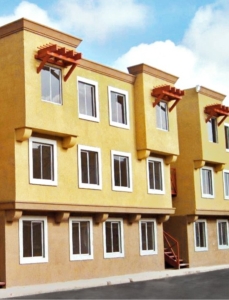Stories
Enterprise Development and Microfinance Journal: Building the Business Case for Green Affordable Housing
Learn about the emerging business-driven case for green affordable housing via six key drivers of profitability
The following is an excerpt from The Business Case for Green Affordable Housing, originally published in The Journal of Enterprise Development and Microfinance, Vol. 32, Issue 3, September 2021.
The emerging business-driven case for green affordable housing reveals six drivers of profitability: 1) access to international green finance flows for better financing terms; 2) minimized incremental cost through early planning; 3) faster sales through market differentiation; 4) savings on utility bills for owners and renters; 5) lowered default rates and superior collateral value for green mortgages; and 6) fiscal and non-fiscal incentives from local or national governments.
Case studies from several emerging markets show that the right combination of government incentives (including non-fiscal policies), education and technical assistance to developers (including a no-cost option), and green finance (including green bonds and green mortgages) can transform housing markets. In order to reflect the total life-time cost of ownership, the concept of affordability in housing should include the impact of resource-efficiency and resilience on the costs and risks of ownership.
The residential construction sector has a tremendous opportunity to avoid harmful emissions through energy efficiency, green materials, and improved design and construction that create affordable and healthy homes. The global need for housing is both contributing to climate change and exacerbated by it as extreme weather events damage existing homes and displace residents. Countries are trying to address the needs of 1.6 billion people living in substandard accommodation (Habitat for Humanity, 2020) through incredible construction growth. Half of the buildings expected to stand in 2060 have not yet been built (Global Alliance for Buildings and Construction, 2020a).
Unfortunately, the building boom is not incorporating sustainability considerations. Residential buildings now represent 18 percent of total global energy related CO2 emissions, with an additional 10 per cent of emissions coming from buildings construction (Global Alliance for Buildings and Construction, 2020a). Decarbonization efforts have not matched the overall construction volumes, with the speed of decarbonization falling by half from 2016 to 2019 (Global Alliance for Buildings and Construction, 2020a). The Buildings Climate Tracker determines decarbonization speed through: investments in buildings efficiency, policies, and green certifications (Global Alliance for Buildings and Construction, 2020a.)
Download the full article from The Journal of Enterprise Development and Microfinance


